(Page créée avec « • Lay the bricks on the surface of the table without covering the hole. The surface must be the straightest and most horizontal possible. • Lay the canister o... ») |
(Page créée avec « The fireplace ») |
||
| Ligne 56 : | Ligne 56 : | ||
{{ {{tntn|Tuto Step}} | {{ {{tntn|Tuto Step}} | ||
|Step_Picture_00=Four_à_économie_de_bois_8.PNG | |Step_Picture_00=Four_à_économie_de_bois_8.PNG | ||
| − | |Step_Title= | + | |Step_Title=The fireplace |
|Step_Content=* Sous la table, construire le foyer rectangulaire avec une ouverture pour mettre le combustible. | |Step_Content=* Sous la table, construire le foyer rectangulaire avec une ouverture pour mettre le combustible. | ||
* Au bout du foyer et communiquant avec lui, construire une cheminée verticale de dimensions 20*20 du sol jusqu'au dessous de la table. | * Au bout du foyer et communiquant avec lui, construire une cheminée verticale de dimensions 20*20 du sol jusqu'au dessous de la table. | ||
Version du 22 février 2019 à 20:00
Description
An oven made with easily accessible materials to cook food and heat a room up with just a small amount of wood.
Introduction
This oven fabrication technique was documented on during one of our trips, looking for low-techs in South America from June to September 2017 in Ecuador, Peru and Bolivia.
This oven, used in the Finca Fina farm near Malacatos in Ecuador, can cook all sorts of foods with just a small amount of wood. It can store heat sufficiently and once it's hot, it can carry on cooking dishes for a considerable amount of time without being maintained. The fact that only a little fuel is used, is an advantage for regions where there isn't much wood. On a certain scale, this advantage helps reduce deforestation due to the use of wood for cooking. The low consumption of wood prevents the user from travelling as often for a supply of wood.
Easy to make, some knowledge in masonry is however needed, one part is made out of bricks, displayed to form an arch. Certain metal parts need to be welded, so welding skills are also recommended.
Matériaux
• A metal canister of at least 30 cm in diameter
• Some bricks 4 cm thick maximum
• A big bucket • A metal pipe 10 cm in diameter (the length depends on the height of the ceiling in the house and the chimney must exceed the roof by at least 30 cm). • Soil (clay soil if possible) • Cement • A grill whose width is slightly smaller than that of the canister • Wire mesh less than 0.5 cm
Outils
• Wire cutter
• Trowel • Welder (if necessary) • Wood saw • Shovel
Étape 1 - Making the table
• Build a solid wooden table. Shape it so the canister can be laid down on the middle of the table and so that 30 cm are left on each side of it.
• Make a square-shaped hole in the middle of the table 20 cm*20 cm • Cover it with an even layer of mud 4 cm thick
Étape 2 - The brick arch
• Lay the bricks on the surface of the table without covering the hole. The surface must be the straightest and most horizontal possible.
• Lay the canister on the middle of the table, horizontally. It must be slightly raised so the air can circulate underneath.
• Build a cement-brick arch in order to cover the canister, leaving a 10 cm space around it. Leave a
10 cm hole on top of the arch for the passage of the flue.
• At the end of this stage, only the opening of the canister should be visible.
Étape 3 - The fireplace
- Sous la table, construire le foyer rectangulaire avec une ouverture pour mettre le combustible.
- Au bout du foyer et communiquant avec lui, construire une cheminée verticale de dimensions 20*20 du sol jusqu'au dessous de la table.
- Assurer la bonne étanchéité avec du ciment
Étape 4 - L'isolation
- Mélanger de la terre (argileuse si possible) et de l'eau dans le grand seau.
- Bien mélanger.
- Recouvrir l’arche avec le grillage fin après lui avoir donné la bonne forme.
- Attention à laisser libre le trou de 10 cm de diamètre dans l'arche pour le conduit d'évacuation des fumées
- Recouvrir le grillage d’une couche de 4 cm de boue sans recouvrir le trou de 10 cm de diamètre.
- Laisser sécher.
Étape 5 - L'évacuation des fumées
- Installer le tuyau de diamètre 10 cm de façon étanche entre le trou laisser dans l'arche et le toit
Étape 6 - La porte et la grille
- Fermer hermétiquement le tonneau. Une charnière peut être soudée sur un côté de l’ouverture du bidon (cf photo).
- Les supports des grilles peuvent être soudés directement dans le bidon (cf photo).
Étape 7 - Utilisation
Une fois que la terre est bien sèche :
- Lancer un feu dans le foyer. L’alimenter suffisamment.
- Atteindre que le four soit bien chaud, possibilité de placer un thermomètre adéquat à l'intérieur pour contrôler la température. Cela prend entre 30 et 40 minutes.
- Enfourner le ou les plat(s) et surveiller la cuisson en ouvrant rapidement la porte du four. Continuer à alimenter le feu de façon normale.
La chaleur que diffuse le four peut permettre de réchauffer la pièce.
Published
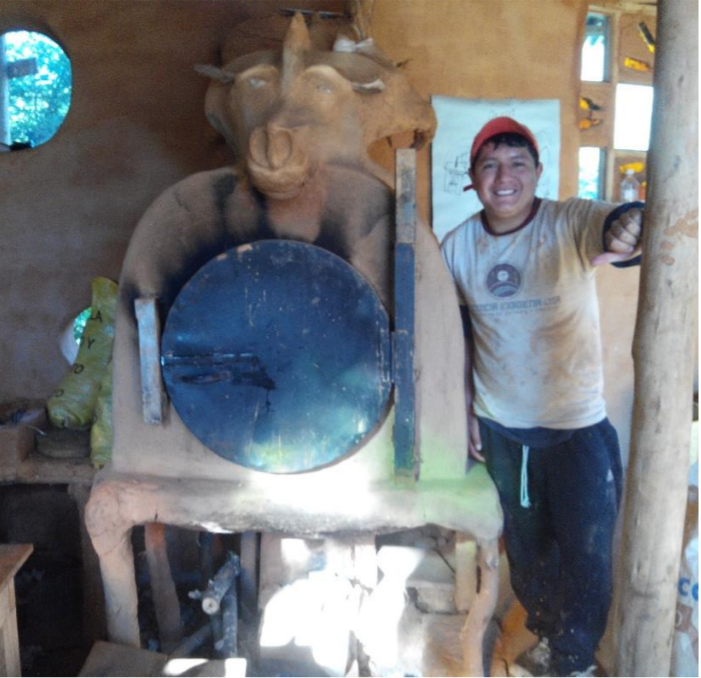
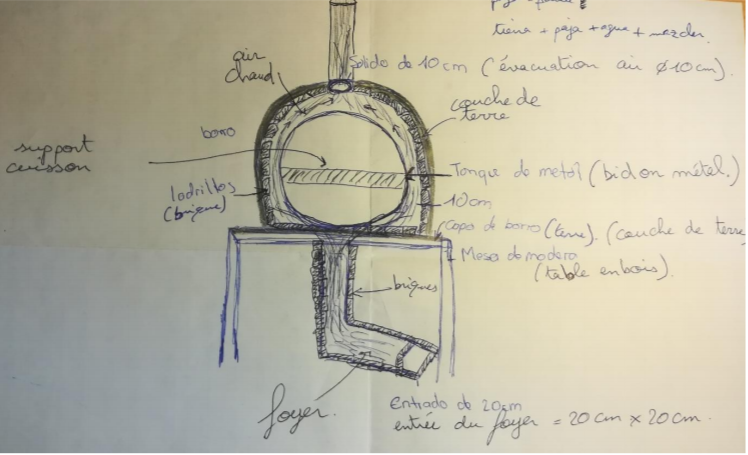
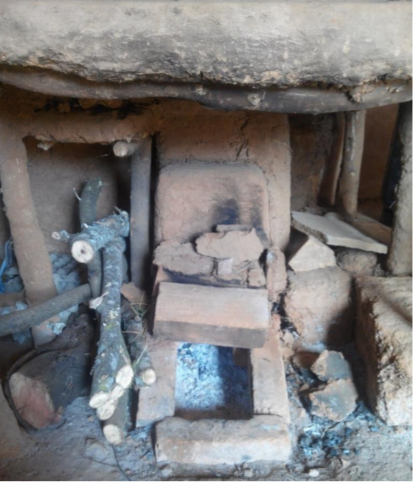
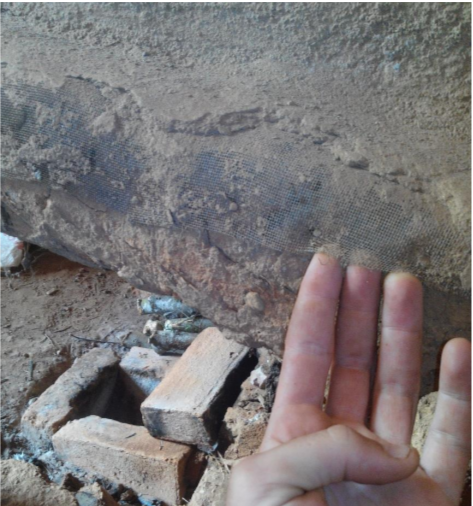
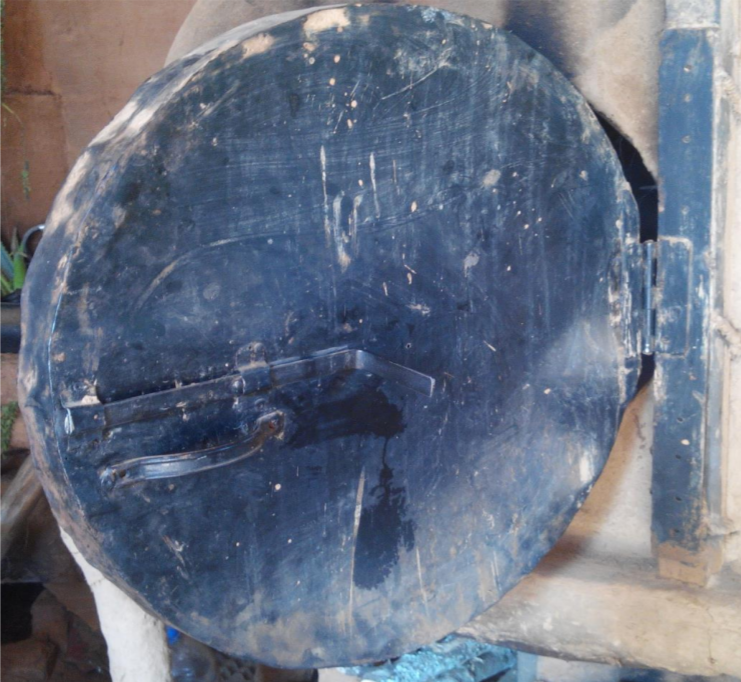
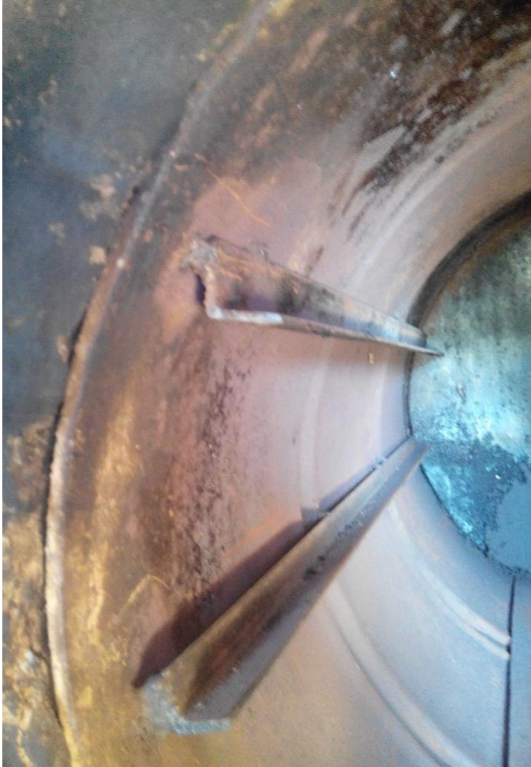
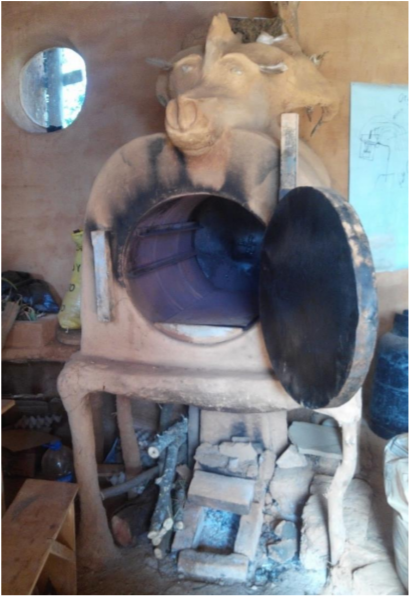
 Français
Français English
English Deutsch
Deutsch Español
Español Italiano
Italiano Português
Português